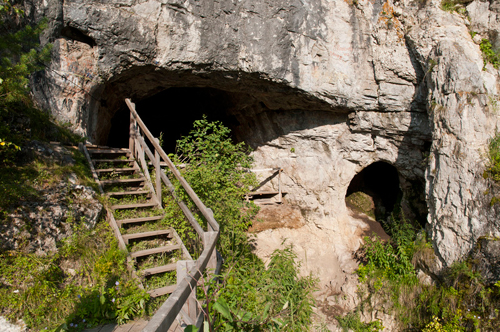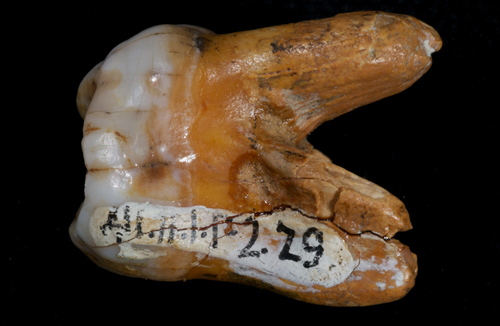Extinct Human Cousin Helped the Inuit Survive According to New Paper
Analysis of the Genome of an Inuit Population Hints at Denisovan Influence
A team of international scientists including researchers from the New York Genome Centre and the University of California Berkeley, have analysed the genome of a population of Inuit from Greenland and identified components that may originate from the Denisovans or a related archaic human species.
The “caveman” genes have helped these people adapt and survive in cold climates. In the first genomic analysis of Inuit people from Greenland, the scientists scrutinised two genes, namely TBX15 and WARS2 that seem to be a close match to an archaic human genetic variant, potentially Denisovan or some other closely related Denisovan-like species that has yet to be found in the fossil or anthropological records.
TBX15 is known to help the human body cope with cold temperatures and influences the distribution of body fat, whilst WARS2 encodes the mitochondrial tryptophanyl-tRNA synthetase and may have a role in managing blood vessels associated with the heart.
Who are the Inuits?
The Inuit are collection of culturally similar peoples that inhabit the Arctic regions of Alaska, Canada and Greenland. Although widespread throughout the Arctic Circle, most anthropologists believe that the ancestors of the Inuit people originated from Siberia. The Inuit have made their home in one of the harshest environments on Earth and their traditional lifestyle is based around hunting. As a result, their diet is rich in protein, low in carbohydrates and despite the lack of agriculture and plant cultivation, the people derive vitamins and other trace elements essential to health from fish/meat based foods supplemented by seasonal berries, herbs and edible seaweeds.
Dr Fernando Racimo (New York Genome Centre) and a co-author of the scientific paper published in the “Journal of Molecular Biology and Evolution” commented:
“The Inuit DNA sequence in this region matches very well with the Denisovan genome, and it is highly differentiated from other present-day human sequences, though we can’t discard the possibility that the variant was introduced from another archaic group whose genomes we haven’t sampled yet.”
Who were the Denisovans?
The Denisovans are a third species of hominin, closely related to Neanderthals but distinct enough to be regarded as a separate human species. In 2008, scientists excavating 40,000-year-old cave deposits in southern Siberia, unearthed a single tooth and a tiny finger bone. The tooth can from an adult human, the finger bone from a child.
Genetic analysis of nuclear DNA extracted from the digit gave the researchers quite a surprise. When this DNA was compared to that genome of modern humans and Neanderthals, it was different. Here was evidence of a new species of hominin that lived until quite recently. This new species was named “Denisovan” after the cave in which the bone and the tooth were found. The Denisovans, evidently had brown hair, eyes and dark skin, at least, this is indicated by the genetic information retrieved from the single finger bone.
To read an article about the discovery of the Denisovans: X-woman! A Third Species of European/Siberian Early Human Discovered.
A View of the Entrance to the Cave (southern Siberia) Where Denisovan Fossil Evidence was Found
Picture credit: Max Planck Institute
Studying the Denisovan Genome
Intriguingly, geneticists have also found an overlap between the Denisovan genome and that of some modern groups of Asians and Pacific Islanders. A number of theories regarding this have been put forward, for example, it has been suggested that Denisovans living in eastern Eurasia interbred with modern humans that were migrating into the region.
When these modern human pioneers reached outlying islands of the Asian continent such as Papua New Guinea, they brought the mixed H. sapiens/Denisovan DNA within that population, leading to the “echo” of Denisovan DNA found today. Other researchers have argued that the enigmatic Denisovans were much more widespread, ranging far across Asia, although the lack of fossil evidence and calculated genetic diversity contained within a population, indicates that Denisovan numbers were never very high.
Further information regarding the spread of modern human species and the influence of archaic human lineages on the genomes of modern people: Out of Africa Earlier Than Thought!
The research team analysed the genomes of around two hundred Inuit from Greenland in order “to identify genes responsible for biological adaptations to life in the Arctic.” They conclude that the Inuit variant of the TBX15/WARS2 region first came into modern humans from an ancient human line.
For models and replicas of ancient hominins: Safari Ltd Prehistoric Animal and Human Models.
A Lateral View of the Ancient Human Molar Ascribed to the Denisovan Species
Picture credit: Max Planck Institute
Denisovan Genes in Tibetans
Passing on genetic material due to interbreeding between hominin species, that favoured modern humans and helped them adapt to harsh environments is not a new phenomenon. The modern-day inhabitants of the Tibetan plateau are able to cope with living at high altitude as they have a gene variant that enables them to regulate their production and use of haemoglobin more effectively. Genetic analysis suggests that this characteristic came from the Denisovans.
Professor Rasmus Nielson, the lead author of the scientific paper stated:
“We have very clear evidence that this version of the gene came from Denisovans. This shows very clearly and directly that humans evolved and adapted to new environments by getting their genes from another species.”
Visit Everything Dinosaur’s website: Everything Dinosaur.



